Welcome to the dark side of healthy eating! We all strive to make nutritious choices, stocking our pantries with foods that promise health and vitality. But what if I told you that some of these seemingly virtuous options are actually sneaky saboteurs? Yes, my friends, there are certain foods out there masquerading as healthier alternatives when in reality they’re just wolf in sheep’s clothing.
Today, we’re going to shine a light on these deceptive culprits – the 10 foods that give us a false sense of healthiness. So grab your detective hats and get ready for a jaw-dropping revelation. It’s time to expose these imposters and reclaim our well-intentioned diets! Let’s dive right in, shall we?
1. Granola and Granola Bars

Ah, granola – the golden clusters of oats and nuts that promise a wholesome breakfast or snack. It’s hard to resist their crunchy allure as we imagine ourselves munching away on these seemingly healthy treats. But here’s the truth: many store-bought granolas and granola bars are loaded with added sugars and unhealthy fats.
Sure, they might have some whole grains and nuts sprinkled in there, but those health benefits quickly get overshadowed by the excessive amounts of sugar lurking beneath the surface. Don’t be fooled by clever marketing tactics that tout words like “all-natural” or “organic.” Take a closer look at the nutrition labels, my friends.
And let’s not forget portion control! It’s easy to mindlessly devour handful after handful of this addictive mix without realizing just how calorie-dense it can be. So next time you reach for that bag of granola or grab a bar on-the-go, remember to read between the lines (and ingredients) to make sure you’re truly nourishing your body instead of falling into the trap of false healthiness.
2. Flavored Yogurts

Flavored yogurts have become a popular choice for those seeking a healthy and convenient snack. With their creamy texture and delicious flavors, it’s easy to see why they are so appealing. However, despite their innocent appearance, flavored yogurts can often be packed with added sugars and artificial ingredients.
One of the main culprits in flavored yogurts is the added sugar content. Many brands add significant amounts of sugar to enhance the taste, making these seemingly healthy snacks more like desserts. In fact, some flavored yogurts can contain as much sugar as a candy bar!
In addition to the high sugar content, flavored yogurts may also contain artificial sweeteners and additives. These ingredients are used to mimic the taste of real fruit but offer little nutritional value. Artificial sweeteners have been linked to various health issues such as weight gain and digestive problems.
When choosing yogurt, opt for plain or Greek varieties instead. You can then add your own natural sweeteners like fresh fruits or a drizzle of honey for flavor without all the extra additives.
Remember that not all foods labeled as “healthy” are actually good for you. It’s important to read labels carefully and make informed choices about what you put into your body. So next time you reach for that tempting tub of flavored yogurt, think twice before taking that spoonful!
3. Protein Drinks and Bars
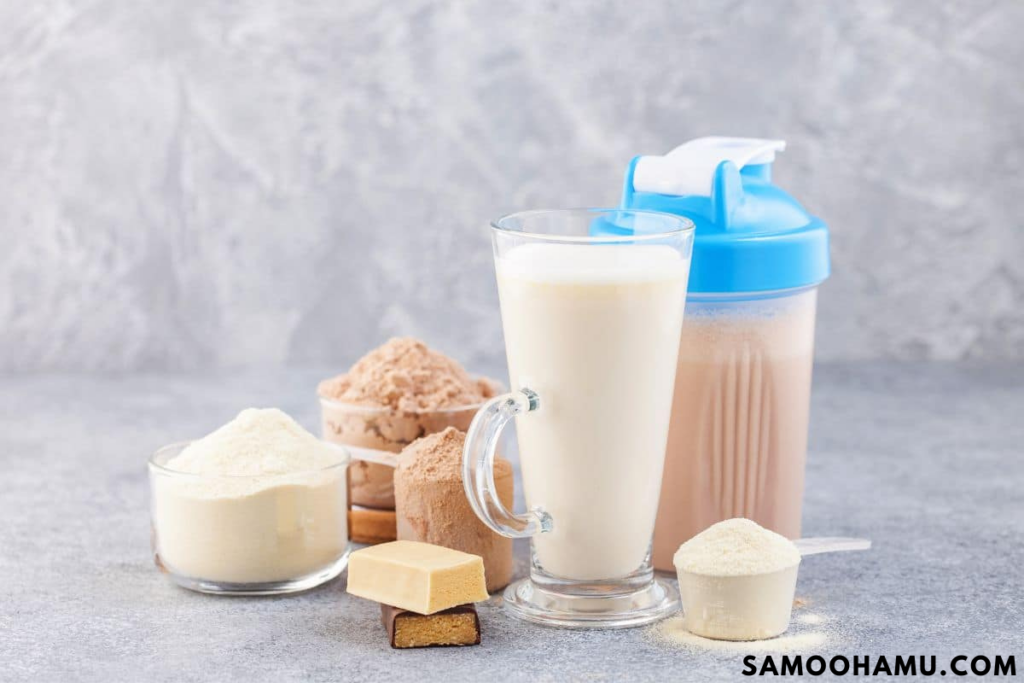
Protein drinks and bars have become a staple in the diets of many health-conscious individuals. With their promises of muscle building and increased energy, it’s easy to see why they are so popular. However, these seemingly healthy snacks may not be as nutritious as they appear.
While protein is an essential macronutrient for our bodies, not all sources are created equal. Many protein drinks and bars on the market contain added sugars, artificial flavors, and preservatives. These additives can actually negate the health benefits of the protein itself.
Additionally, some protein bars are loaded with calories and unhealthy fats. It’s important to read labels carefully to ensure you’re choosing a bar that aligns with your nutritional goals. Look for options that are low in sugar and made from whole food ingredients.
It’s also worth noting that relying too heavily on protein drinks and bars can lead to nutrient deficiencies. These products often lack the vitamins, minerals, and fiber found in whole foods like fruits, vegetables, grains, and legumes.
Instead of reaching for a processed protein drink or bar as your go-to snack or meal replacement, consider incorporating more natural sources of protein into your diet. Opt for lean meats like chicken or turkey breast, fish rich in omega-3 fatty acids such as salmon or sardines; plant-based proteins like beans or lentils; dairy products like Greek yogurt or cottage cheese; nuts; seeds; and eggs.
Remember that balance is key when it comes to nutrition – don’t rely solely on packaged convenience items labeled “high-protein” without considering their overall nutritional value.
4. Sports Drinks and Energy Beverages
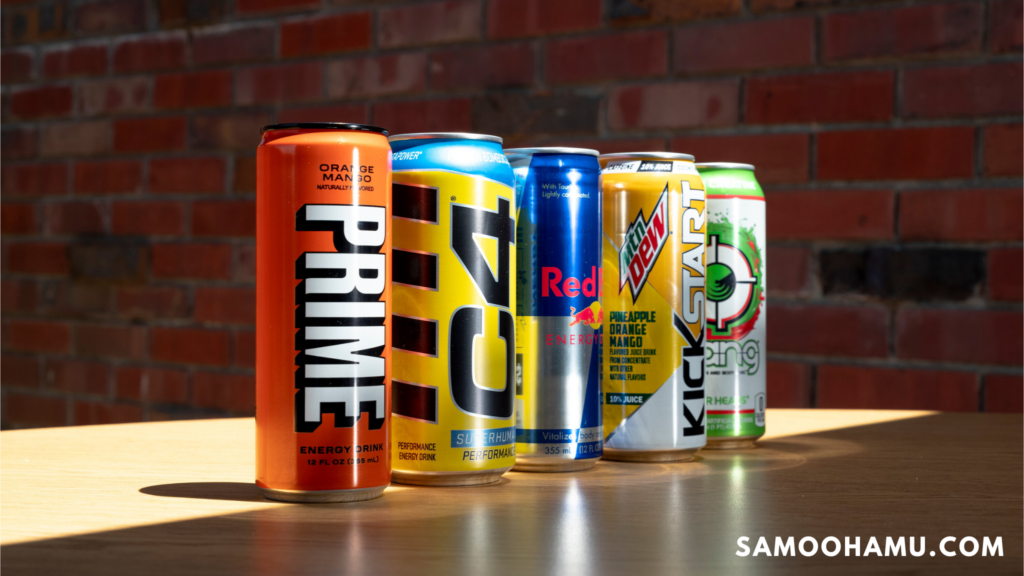
Sports drinks and energy beverages have become a staple for many people looking to fuel their workouts or stay energized throughout the day. With flashy packaging and promises of enhanced performance, it’s easy to believe that these drinks are a healthy choice. However, looks can be deceiving.
One of the main issues with sports drinks is their high sugar content. While they may provide a quick burst of energy, this often leads to a crash later on. Additionally, consuming excessive amounts of sugar can contribute to weight gain and other health problems.
Energy beverages are no better. Packed with caffeine and other stimulants, these drinks may give you a temporary boost but can also leave you feeling jittery and anxious. They can also disrupt your sleep patterns if consumed too close to bedtime.
Another concern is the artificial ingredients found in these drinks. Many contain artificial flavors, colors, and sweeteners that have been linked to negative health effects such as headaches and digestive issues.
Instead of relying on sports drinks or energy beverages, opt for natural alternatives like water infused with fruits or herbal teas for hydration. These options provide essential nutrients without added sugars or artificial additives.
Remember, just because something claims to enhance performance or provide an energy boost doesn’t mean it’s actually good for you. It’s always best to choose whole foods and natural sources of hydration whenever possible.
5. Gluten-Free Snack Foods
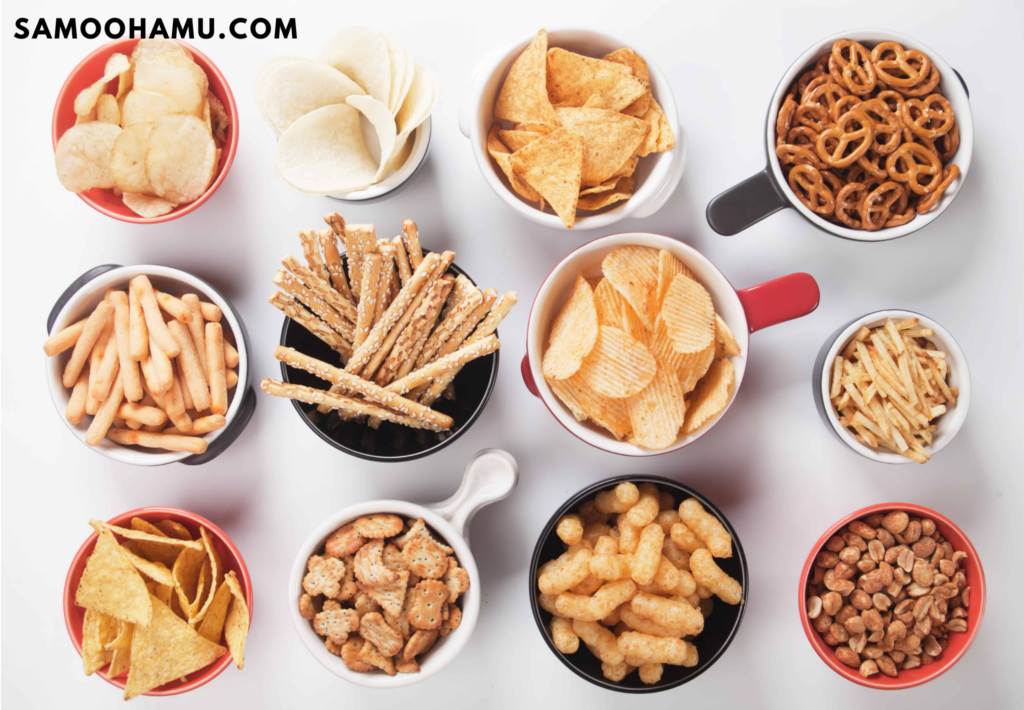
Gluten-free snack foods have gained popularity in recent years, with many people believing that they are a healthier alternative to regular snacks. However, it’s important to remember that just because something is gluten-free doesn’t automatically make it healthy.
Many gluten-free snack foods are highly processed and loaded with sugar, unhealthy fats, and artificial additives. They may be lacking in nutrients and fiber, leading to blood sugar spikes and crashes.
One common misconception is that gluten-free cookies or cakes are better for you than their gluten-containing counterparts. While they may not contain gluten, they often contain higher amounts of sugar and unhealthy fats to compensate for the lack of texture and flavor provided by gluten.
Another offender is gluten-free chips or crackers. These snacks can be high in sodium and unhealthy oils, which can contribute to heart disease when consumed in excess.
It’s also worth noting that not all packaged granola bars labeled as “gluten-free” are necessarily healthy options. Some may still contain added sugars or artificial sweeteners that can negatively impact your health if consumed regularly.
If you’re following a strict gluten-free diet due to a medical condition like celiac disease or non-celiac gluten sensitivity, there are healthier alternatives available such as homemade snacks made from whole ingredients like fruits, nuts, seeds, and natural sweeteners like honey or maple syrup.
In conclusion (without using the words “in conclusion”), while there are some great options out there for those on a gluten-free diet who want to enjoy snacks without compromising their health goals – it’s essential not to assume that all products labeled “gluten-free” automatically equate to being healthy choices. Always read labels carefully and choose whole food-based options whenever possible!
6. Some Low Fat and Fat-free Products

When it comes to choosing healthier options, many people turn to low fat and fat-free products. After all, they seem like the perfect choice for those looking to shed a few pounds or maintain a healthy lifestyle. However, these seemingly innocent products may not be as healthy as they appear.
Low fat and fat-free foods often contain added sugars and artificial ingredients to compensate for the lack of flavor that is typically provided by fats. These additives can actually be more detrimental to your health than the fats themselves. Additionally, when fats are removed from food products, it often results in a loss of taste and texture, leading manufacturers to add extra salt or other unhealthy substitutes.
Furthermore, low fat and fat-free foods can give you a false sense of security when it comes to portion control. Since they are marketed as “healthy” options, many people assume they can eat larger quantities without consequence. This mindset can lead to overconsumption and ultimately hinder weight loss goals.
It’s important to remember that not all fats are bad for you; in fact, some types of fats are essential for overall health. Opting for whole foods that naturally contain healthy fats (such as avocados or nuts) is generally a better choice than relying on processed low-fat alternatives.
So next time you’re reaching for that low-fat yogurt or fat-free salad dressing, take a closer look at the ingredient list and consider whether it truly aligns with your health goals. Remember that sometimes what seems healthy on the surface may not always be the best option in reality!
7. Breakfast Cereal
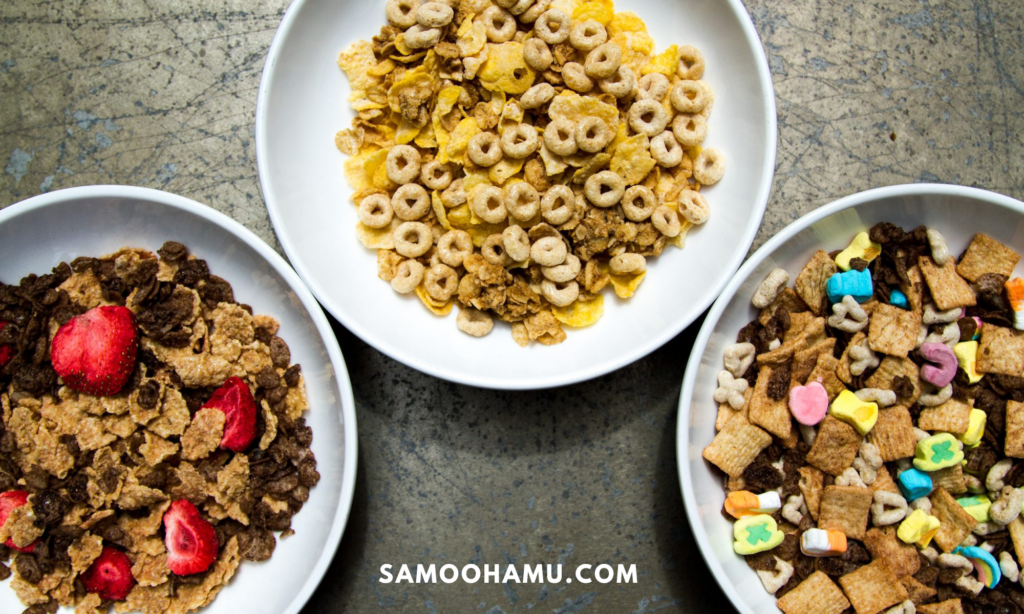
Breakfast cereal has long been touted as a healthy and convenient way to start the day. With colorful packaging and clever marketing, it’s easy to fall into the trap of thinking that all cereals are good for you. However, many breakfast cereals are actually loaded with sugar and artificial ingredients, giving them a false sense of healthiness.
One of the main issues with breakfast cereal is its high sugar content. Even those labeled as “healthy” or “low-fat” often contain more sugar than you might expect. This can lead to blood sugar spikes and crashes, leaving you feeling hungry and fatigued shortly after eating.
Another concern is the lack of fiber in many breakfast cereals. While some may claim to be high in whole grains, they often lack the necessary fiber to keep you feeling full and satisfied throughout the morning. Instead, they leave you reaching for snacks soon after breakfast.
Additionally, most commercial breakfast cereals are highly processed and stripped of their natural nutrients during manufacturing. This means that even if they contain added vitamins and minerals, they may not be absorbed by your body as effectively as those found naturally in whole foods.
So next time you reach for that box of cereal in the morning, take a closer look at the ingredients list and nutrition label. Opt for varieties that are lower in sugar, higher in fiber, and made from whole grains whenever possible. And remember – just because it’s marketed as healthy doesn’t mean it truly is!
8. Some Vegetable Oils
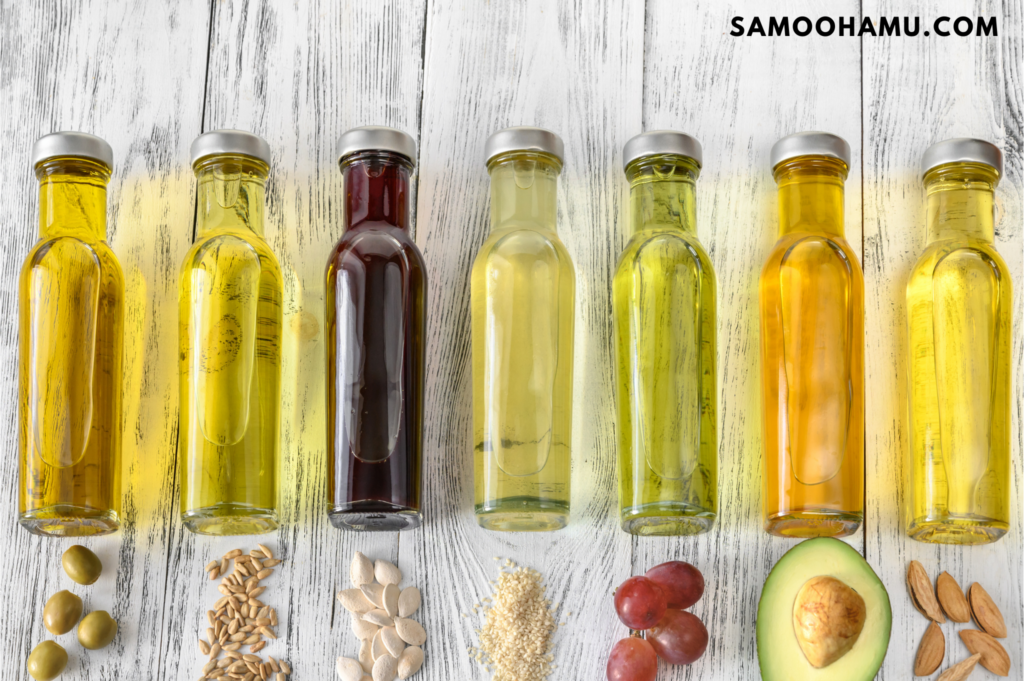
Some vegetable oils may seem like a healthier alternative to traditional cooking oils, but appearances can be deceiving. While they may be marketed as “heart-healthy” or “all-natural,” these oils can actually have negative effects on your health.
One example is soybean oil, which is commonly used in many processed foods and restaurant dishes. Despite its popularity, soybean oil contains high levels of omega-6 fatty acids, which can contribute to inflammation in the body when consumed in excess. This inflammation has been linked to various chronic diseases such as heart disease and diabetes.
Another culprit is corn oil, often touted for its high vitamin E content. However, corn oil also contains a significant amount of omega-6 fatty acids and lacks the balance of beneficial omega-3s. Consuming too much omega-6 without sufficient omega-3 intake can disrupt the delicate balance required for optimal health.
Even seemingly healthy options like sunflower oil and safflower oil can be problematic. They are highly refined and undergo extensive processing methods that strip away their natural nutrients. Additionally, these oils are prone to oxidation when exposed to heat or light, leading to the formation of harmful compounds that could potentially promote inflammation in the body.
While some vegetable oils may appear healthy on the surface due to clever marketing tactics or nutritional claims, it’s important to remember that moderation is key. Instead of relying solely on vegetable oils for cooking purposes, try incorporating other healthier alternatives such as olive oil or avocado oil into your diet for better overall health benefits.
9. Premade Smoothies

Are you a fan of premade smoothies? They seem like the perfect on-the-go option for a healthy and refreshing drink. But before you reach for that bottle, let’s take a closer look at what might be lurking beneath the label.
While premade smoothies may appear to be packed with fruits and vegetables, many of them are actually loaded with added sugars and artificial ingredients. These hidden culprits can quickly turn your “healthy” drink into a sugar bomb.
One common misconception is that all smoothies are created equal. Unfortunately, this is far from the truth. Many store-bought options contain fruit juice concentrates or sweeteners to enhance flavor. This means you’re getting more sugar than actual nutrients in each sip.
Another issue with premade smoothies is their lack of fiber content. When you blend whole fruits and vegetables at home, you retain the natural fibers found in these ingredients. However, commercial brands often strain out these fibers during processing, leaving behind only the sugary liquid.
Furthermore, some premade smoothie varieties may use low-quality protein powders or fillers to give them an extra nutritional boost. While protein is important for muscle repair and satiety, it’s crucial to choose high-quality sources rather than relying on processed additives.
So how can we enjoy a truly healthy smoothie? The best approach is to make your own at home using fresh ingredients whenever possible. This way, you have full control over what goes into your drink – no hidden sugars or artificial additives.
If convenience is key for your busy lifestyle, consider prepping individual portions ahead of time by freezing chopped fruits and veggies in bags or containers. Then simply blend them together with water or unsweetened plant-based milk when ready to enjoy.
Remember: just because something claims to be healthy doesn’t always mean it actually is! Be mindful of what goes into those premade smoothies and opt for homemade versions whenever possible.
10. Diet Soda

Now that we’ve explored the deceptive world of seemingly healthy foods, it’s time to shed light on one final culprit – diet soda. Many people turn to diet soda as a guilt-free alternative to regular soda, thinking they are making a healthier choice. But unfortunately, this bubbly beverage is not as innocent as it appears.
While diet sodas may be low in calories and sugar-free, they contain artificial sweeteners like aspartame or sucralose. These synthetic additives have been linked to numerous health issues including headaches, digestive problems, and even an increased risk of metabolic disorders.
Moreover, studies have shown that consuming diet soda can actually lead to weight gain rather than weight loss. The artificial sweeteners trick your brain into expecting sugar and when it doesn’t receive it from the zero-calorie drink, cravings for sweets can intensify.
Additionally, the carbonation in diet sodas can contribute to bloating and gas discomfort for some individuals. This fizzy treat might seem refreshing at first sip but could leave you feeling gassy and uncomfortable later on.
So next time you reach for that tempting can of diet soda with its appealing “zero calories” label, remember that there might be more lurking beneath the surface than meets the eye. It’s always better to opt for healthier alternatives such as infused water or herbal tea instead.
In conclusion (oops!), don’t let yourself fall victim to these misleading food choices! Be vigilant about reading labels carefully and understanding what ingredients truly make up your meals and snacks. Remember that true healthiness comes from nourishing your body with whole foods rather than falling into marketing traps set by clever packaging or catchy buzzwords.
By being aware of these 10 foods that give a false sense of healthiness – granola bars, flavored yogurts, protein drinks/bars,sports drinks/energy beverages, gluten-free snack foods, low-fat/fat-free products, breakfast cereal,




